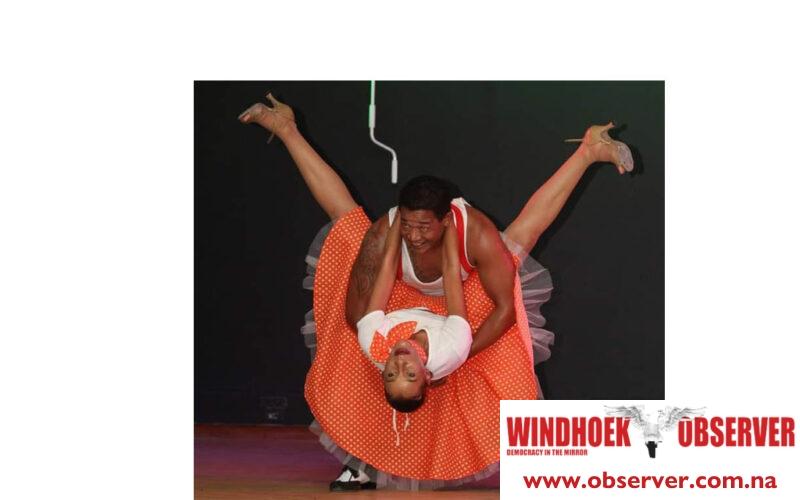“The moment you are independent and can do everything for yourself, and the next moment, you have to be dependent… it can be very depressing,” says Edmund van Neel, a man whose life has been a testament to the extraordinary dance between independence and resilience.
In the vibrant world of dance, where each step paints a picture of expression, Edmund Van Neel stands as a symbol of unwavering determination. As the founder of Phoenix Dance Studio, current president of Dance Sport Namibia, and a luminary in Namibia’s dance world, Edmund’s life took an unexpected turn – a turn that transformed him into a beacon of hope.
In the summer of 2019, the rhythmic beats of Edmund’s life abruptly halted. A stroke, like an unexpected hiccup in a graceful dance, left him paralyzed on the left side of his body. The once vibrant dancer found himself not only dealing with physical challenges but also navigating the mental strains of uncertainty.
Transported to the ICU in Cape Town, Edmund’s battle for recovery unfolded like an intricate ballet. His left side lay dormant, and the challenge to reopen neural pathways became a meticulous dance of determination.
“The process of healing was to give my brain the same command repeatedly,” Edmund shared, shedding light on the intricate steps of his recovery.
“With repetition, the nerve endings grow back, and once they’re back, that’s when the command can go through. I kept telling myself to, ‘Move my finger.’ The moment I moved my fingers, I got my whole arm back in terms of movement and control within a day and a half.”
And that revelation opened his eyes in profound ways.
The doctors told Edmund that he would be walking in two to three months, but Edmund fueled by his irrepressible spirit, jokingly wagered with his neurosurgeon.
“Listen, doc, if you decide I can only walk in two or three months, I think you must give me half your salary because if I cannot move, I do not eat,” he humorously declared.
This banter revealed the determination that would define his journey.
Just four or five days after being discharged from the hospital, Edmund immersed himself in the relentless pursuit of walking. Every day, every moment, he focused solely on regaining the ability to walk. It was a testament to his unwavering commitment and the power of muscle memory.
Edmund attributes his successful recovery to a blend of muscle memory and indomitable willpower.
“Luckily for me, muscle memory played a huge role, and my very strong willpower, obviously, just to get back to doing what I was able to do beforehand,” he acknowledged.
This fusion of physical resilience and mental fortitude became the choreography of his triumphant return.
I draw parallels between his journey and the Japanese art of kintsugi, where brokenness is mended with gold, creating a masterpiece more beautiful for its scars. The intentional creation of new neural pathways becomes his golden thread, stitching together a renewed sense of self.
“Knowing that one can intentionally create new neural pathways… it blew my mind,” Edmund articulated, as if painting strokes of gold onto the broken pieces of his existence.
Beyond personal triumph, Edmund’s story becomes a beacon of hope. He shares his journey not only as a dancer but as a stroke warrior. His experiences become a source of inspiration for stroke survivors and medical professionals worldwide.
Edmund was invited to share his recovery story at the World Summit in connection with the South African Art and Stroke Foundation.
“I’ve helped a few people… it was also valuable data for them wherever they were in the world,” he explained, emphasizing the ripple effect of his narrative.
Against the backdrop of recovery, Edmund’s life post-stroke is a symphony of achievements. Winning competitions, producing live stage productions, and aiming to pursue an honours degree in Latin dancing, he dances back to victory. Each accomplishment is a note, a reminder of the resilience embedded in his very being.
Edmund’s journey transcends the dance floor, reshaping his approach to life. Stress management and self-care become integral components of his choreography. His story is not just about dance steps but about life’s intricate movements, emphasizing the importance of maintaining a balanced rhythm.
“I’m a much wiser person… how you approach life daily,” he reflects, offering insights into the profound transformation his journey has wrought.
Edmund’s story is a dance – a dance of triumph over adversity, of rediscovering oneself through the intricate steps of recovery.
The stroke may have disrupted his rhythm momentarily, but Edmund, the resilient dancer, has choreographed a dance of life that continues to unfold – a dance that inspires, moves and triumphs over the discordant notes fate may play.




